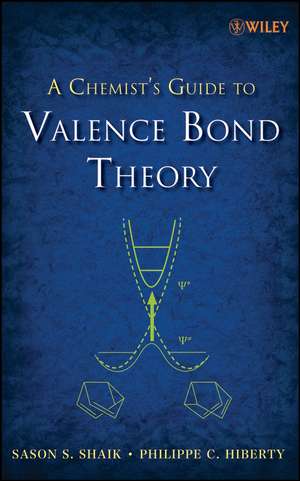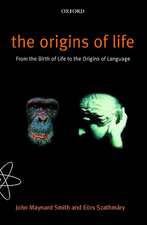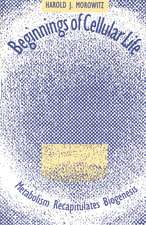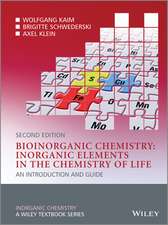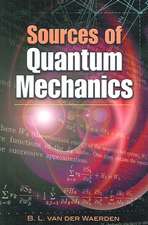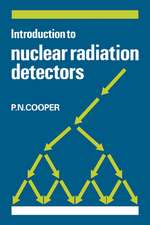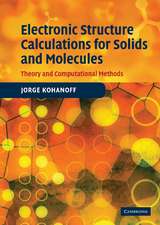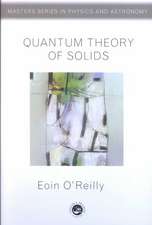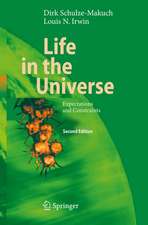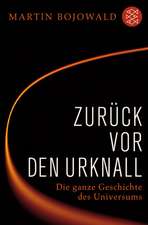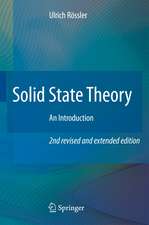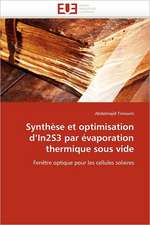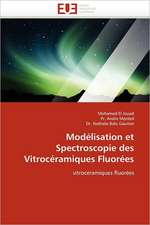A Chemist′s Guide to Valence Bond Theory
Autor S Shaiken Limba Engleză Hardback – 20 dec 2007
Preț: 866.13 lei
Preț vechi: 951.79 lei
-9% Nou
165.76€ • 172.41$ • 136.84£
Carte tipărită la comandă
Livrare economică 12-26 aprilie
Specificații
ISBN-10: 0470037350
Pagini: 336
Dimensiuni: 156 x 234 x 21 mm
Greutate: 0.61 kg
Editura: Wiley
Locul publicării:Hoboken, United States
Public țintă
Libraries Computational chemists, chemical physicists, and research chemists in organic and organometallic/inorganic chemistry concerned with reactivity and molecular structureUniversity and college teachers
Advanced undergraduate and graduate students
The work can be used as a textbook in an advanced course on valence bond theory and its uses in chemistry.
Cuprins
Preface. Chapter 1. A Brief Story of VB Theory, Its Rivalry With MO Theory, Its Demise And Resurgence. 1.1. Roots of VB Theory. 1.2. Origins of MO Theory and the Roots of VB-MO Rivalry. 1.3. One Theory is Up the Other is Down.. 1.4. Mythical Failures of VB Theory: More Ground is Gained by MO Theory. 1.5. Are the Failures of VB Theory Real?. 1.5.1. The O2 "Failure". 1.5.2. The C4H4 "Failure". 1.5.3. The C5H5+ "Failure". 1.5.4. The "Failure" Associated with the Photoelectron Spectroscopy (PES) of CH4 . 1.6. VB is a Legitimate Theory Alongside MO Theory. 1.7. Modern VB Theory: VB Theory is Coming of Age. Chapter 2. A Brief Tour Through Some VB Outputs and Terminology. 2.1. VB Output for the H2 Molecule. 2.2. VB Mixing Diagrams. 2.3. VB Output for the HF Molecule. Chapter 3. Basic Valence Bond Theory. 3.1. Writing and Representing VB Wave. Chapter 4. Mapping MO-CI TO VB Wave Functions. 4.1. Generating a set of VB structures.
Descriere
Modern valence bond theory and state-of-the-art methodologies Since the 1980s, valence bond (VB) theory has enjoyed a renaissance characterized both in the qualitative application of the theory and in the development of new methods for its computer implementation. Written by leading authorities, this is the premier reference on current VB theory and applications in a pedagogical context, perhaps the first such attempt since Pauling's The Nature of the Chemical Bond. After an introduction, A Chemist's Guide to Valence Bond Theory pre-sents a practical system that can be applied to a variety of chemical problems in a uniform manner. Concise yet comprehensive, it includes: * A tour of some VB outputs and terminology * An explanation of basic VB theory * A discussion of various applications of the VB method to chemical problems, encompassing bonding problems, aromaticity and antiaromaticity, the dioxygen molecule, polyradicals, excited states, organic reactions, inorganic/organometallic reactions, photochemical reactions, and catalytic reactions * Samples of inputs/outputs and instructions for interpreting results * A short programmable outline for converting molecular orbital wave functions to VB structures * A guide for performing VB calculations Complete with exercises and answers at the end of chapters, numerous solved problems, and a glossary of terms and symbols, this is the authoritative guide for computational chemists, chemical physicists, and research chemists in organic and organometallic/inorganic chemistry concerned with reactivity and molecular structure. It is also an excellent text for advanced undergraduate and graduate students.
